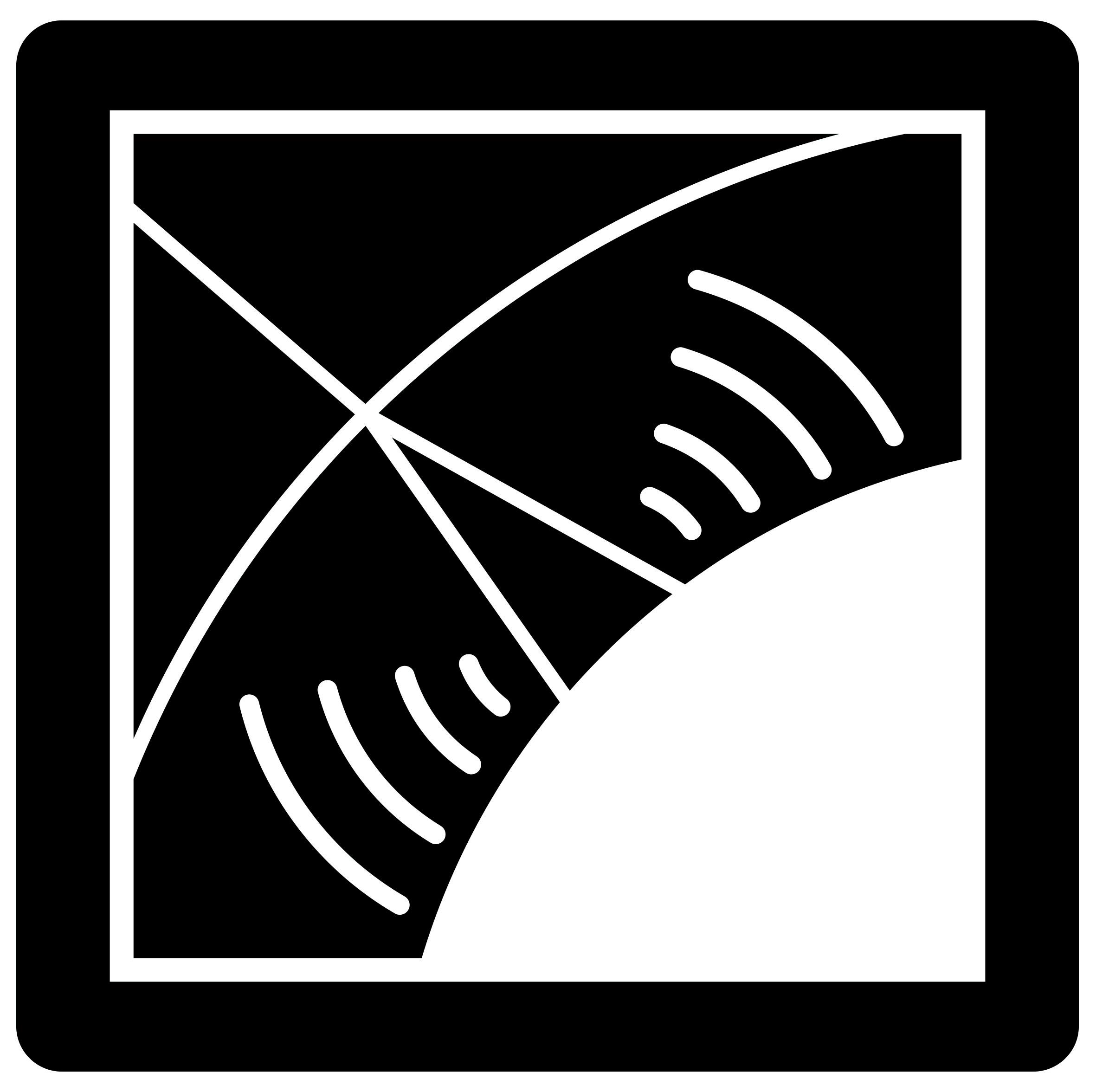The Radio Gamma Key Program
While the first ideas about detecting gamma ray air showers with radio antennas emerged in 2016 through discussions between two members of the Astroparticle group of Subatech, it is only since the second half of 2018 that we are trying to set up a system able to realize this.
 Figure: a large very inclined cosmic ray event observed in coincidence by 51 autonomous stations of CODALEMA (peach-coloured circles) and the 48 mini-arrays of NenuFAR working at that time (pale green hexagons). The size of the symbols indicates the strenght of the cosmic signal received by individual detectors. The signals of the NenuFAR mini-arrays have been rescaled to fit the scale of the autonomous station ones. The dots in the inset indicates the arrival direction of the cosmic ray initiated air-shower (red: measured by the autonomous stations, cyan: measured by the NenuFAR mini-arrays). The inset background represents the gain of the whole telescope in grayscale, with the green circle showing the current pointing direction. With nearly 1000 antennas involved, this event is probably the one observed with the largest number of antennas ever.
Figure: a large very inclined cosmic ray event observed in coincidence by 51 autonomous stations of CODALEMA (peach-coloured circles) and the 48 mini-arrays of NenuFAR working at that time (pale green hexagons). The size of the symbols indicates the strenght of the cosmic signal received by individual detectors. The signals of the NenuFAR mini-arrays have been rescaled to fit the scale of the autonomous station ones. The dots in the inset indicates the arrival direction of the cosmic ray initiated air-shower (red: measured by the autonomous stations, cyan: measured by the NenuFAR mini-arrays). The inset background represents the gain of the whole telescope in grayscale, with the green circle showing the current pointing direction. With nearly 1000 antennas involved, this event is probably the one observed with the largest number of antennas ever.
Supported by a french CNRS PNHE grant in 2018, we finally proposed a key program to the Scientific Council of NenuFAR in March 2019. This key program was accepted in the frame of the “Early Science Phase” of NenuFAR commissioning. Later on, the idea was presented in the 3 conferences listed on this page. The summary of the key-program proposal describes the subsequent idea:
The radio detection of atmospheric particle showers initiated by ultra-high energy cosmic rays is today a proven technique that allows to reconstruct their properties (direction of arrival, energy, nature). Among the precursors of this method, the CODALEMA experiment installed at the Nançay radio-astronomy Observatory has contributed to several major technological innovations relevant for the radio detection technique (autonomous triggering, hybrid reconstruction, very wide frequency bands) and its high-performance antennas are also used on the NenuFAR radiotelescope in Nançay. We propose to exploit the unique environment of the Nançay Observatory through the CODALEMA experiment and the NenuFAR radio-telescope to explore the possibilities of radio- detection of atmospheric showers initiated by very high energy photons. The central idea is to phase a large set of antennas (several tens) in the direction of known sources emitting gamma (catalogs H.E.S.S., MAGIC, VERITAS, Fermi-LAT …) to significantly increase the sensitivity of detection and to use the triggering capabilities on ultra fast transients controlled within the framework of CODALEMA. This would make it possible to observe the sources with a useful cycle close to 100%. We will use the time waveforms recorded in the Transient Buffer Boards (TBB) of NenuFAR, triggered by the signal built on the incoherent combination of several mini-arrays. Still in the state of prospective reflection, this approach requires first of all to perform simulations of the radio signals produced by the showers initiated by the gammas in order to set detection limits in energy (thanks to the AIRES and SELFAS codes in particular), but also to correctly define the triggering criteria to be applied according to the expected photon fluxes, the ambient noise level and the instrumental constraints of the systems used. We expect to reach a sensitivity to hundreds of TeV gamma, depending on the number of mini-arrays (MA) involved in the trigger system.
The key program proposal (text)
The key program presentation (slides)
